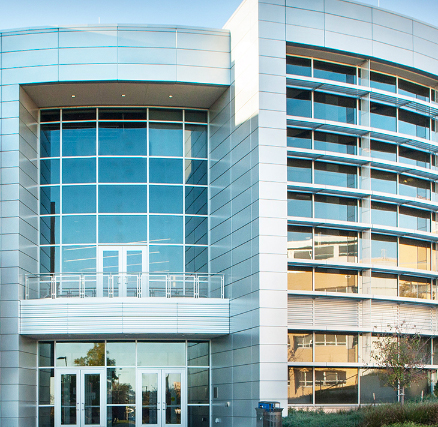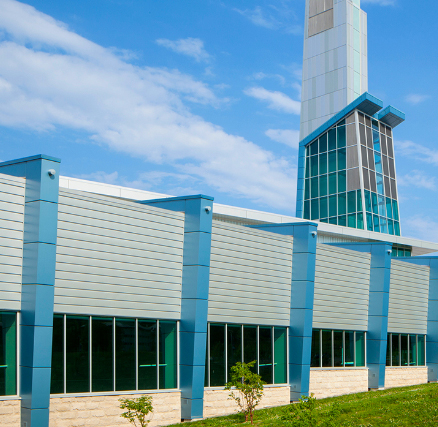Insulated metal panels are at the forefront of sustainable building materials.
From plastics to electronics, there is growing awareness about what goes into the products that make up our world. The built environment is seeing the effects as well, which are reflected in new, more holistic sustainable building standards.
According to the EPA, people spend about 90 percent of their lives in buildings, and until recently, building owners, architects, and designers have had very little say in what goes into the building materials. Today, however, the way we make decisions about designing and constructing is evolving. Design-build teams are recognizing that buildings are more than just places that we occupy; they are the spaces where generations of people live, work and play.
For years, insulated metal panels have been the go-to solution for highly efficient, cost-saving green building enclosures. Their superior thermal efficiency reduces moisture and mold, which can be harmful to occupants, as well as heating and cooling costs. As an all-in-one product, insulated metal panels offer faster installation, less construction waste, and reduced maintenance. These performance and sustainability benefits already lend insulated metal panels LEED credit opportunities.
Fueled by building owners, new sustainable ideas are raising the standards for design-build teams—as well as manufacturers. The sustainable building industry is now moving the needle even further toward healthy building materials. We are rethinking not only how our buildings can be more efficient, but also how every product we use can be more sustainable.
Raising the Bar
The latest LEED standards are primarily driving this more holistic approach to measuring a building’s overall effect on health and the environment. The U.S. Green Building Council released LEED v4 in 2013, and the changes are taking the healthier material trend mainstream.
Overall, LEED v4 raises the bar on sustainable building. Some of the major changes are an expanded focus on energy and materials. With high R-values, many insulated metal panels produced today can offer build teams more credit opportunities for whole-building energy efficiency. Prerequisites also require greater transparency of product material contents as well as the manufacturing process to help building owners, architects, and designers make more informed decisions about what goes onto — and into — buildings.
To achieve LEED v4 credits, environmental product declarations and health product declarations are two voluntary tools that can help building owners, designers, and architects identify a more sustainable insulated metal panel. An environmental product declaration states the environmental impact through the product life cycle, from manufacturing to recycling. A health product declaration discloses any potentially harmful chemicals in a product. It compares product ingredients to a set “hazard” list based on information from government agencies.
Building product manufacturers are beginning to take steps to reduce and eliminate these chemical ingredients from their products. One specific ingredient is halogen: a chemical compound that consists of five elements on the periodic table that can be harmful to human health and the environment over time. In insulated metal panels, the ingredients are often used within the foam core as an economical and effective fire retardant.
Halogenated flame retardants were historically added to products to inhibit ignition or spread of flames. Flame retardants delay the spread of fire by suppressing the chemical reactions in the flame by the formation of a protective layer on the material’s surface. Halogenated flame retardants are compounds that contain chlorine and bromine (halogens), which are classified as persistent bioaccumulative toxins. These toxins can build up in organisms and the building environment, and have been shown to negatively affect the following biological functions: neurological development, reproductive system, thyroid hormone disruption, and liver toxicity.
Where Do We Go from Here?
We are already seeing restrictions on products containing halogen throughout Europe and in parts of the United States. Looking at these trends, the use of halogen-free building materials is on the horizon for insulated metal panels. Already earning high marks in sustainability, insulated metal panels with halogen-free foam will provide building owners with a safer occupant environment and offer architects enhanced performance and sustainability metrics.
Kim Rager, CENTRIA product manager – insulated metal panels, oversees strategic product planning, sales strategy, and market analysis for Formawall with halogen-free foam, CENTRIA’s premier line of insulated metal panels, as well as industrial/commercial foam products.


